Steering Potential for Printing Highly Aligned Discontinuous Fibre Composite Filament
Abstract
1. Introduction
2. Materials and Methods
2.1. Material
2.2. Printing
3. Result and Discussion
3.1. Circular Printing Study
3.2. Printing Modification by Tuning Printing Parameters
- P1: reduce the print speed from 300 mm/min to 200 mm/min at 5 mm before the corner and accelerate to 300 mm/min at 5 mm after the corner;
- P2: pause at the corner for 1 s before moving forward;
- P3: reduce the nozzle height (stamping) from 0.3 to 0.2 mm at the corner;
- P4: reduce nozzle height to 0.2 mm at 5 mm before the corner and rise back to 0.3 mm at 5 mm after the corner;
- P5: same as P4 plus reducing speed from 300 mm/min at 5 mm before the corner to 200 mm/min at the corner, and rise back to 0.3 mm height at 5 mm after the corner while increasing speed back to 300 mm/min.
| Speed (mm/min) | Nozzle Height (mm) | |||||
|---|---|---|---|---|---|---|
| 5 mm Before | At Corner | 5 mm After | 5 mm Before | At Corner | 5 mm After | |
| P1 | 300 | 200 | 300 | 0.3 | 0.3 | 0.3 |
| P2 | 300 | 0 for 1 s * | 300 | 0.3 | 0.3 | 0.3 |
| P3 | 300 | 300 | 300 | 0.3 | 0.3 → 0.2 ** | 0.3 |
| P4 | 300 | 300 | 300 | 0.3 | 0.2 | 0.3 |
| P5 | 300 | 200 | 300 | 0.3 | 0.2 | 0.3 |
3.3. Printing Modification by Adding Compensation Coordinates
3.3.1. Tuning the Compensation Algorithm
- A 30–60° triangle that represents 90–120–150° turning.
- A parallelogram that represents 45° and 135° turning.
3.3.2. Path Compensation of Curvilinear Printing
4. Conclusions
Author Contributions
Funding
Institutional Review Board Statement
Informed Consent Statement
Data Availability Statement
Conflicts of Interest
References
- Ngo, T.D.; Kashani, A.; Imbalzano, G.; Nguyen, K.T.Q.; Hui, D. Additive manufacturing (3D printing): A review of materials, methods, applications and challenges. Compos. Part B Eng. 2018, 143, 172–196. [Google Scholar] [CrossRef]
- Perez, A.R.T.; Roberson, D.A.; Wicker, R.B. Fracture surface analysis of 3D-printed tensile specimens of novel ABS-based materials. J. Fail. Anal. Prev. 2014, 14, 343–353. [Google Scholar] [CrossRef]
- Gardner, J.M.; Sauti, G.; Kim, J.-W.; Cano, R.J.; Wincheski, R.A.; Stelter, C.J.; Grimsley, B.W.; Working, D.C.; Siochi, E.J. Additive Manufacturing of Multifunctional Components using High Density Carbon Nanotube Yarn Filaments; NASA Langley Research Center: Hampton, VA, USA, 2016. [Google Scholar]
- Wu, W.; Geng, P.; Li, G.; Zhao, D.; Zhang, H.; Zhao, J. Influence of layer thickness and raster angle on the mechanical properties of 3D-printed PEEK and a comparative mechanical study between PEEK and ABS. Materials 2015, 8, 5834–5846. [Google Scholar] [CrossRef] [PubMed]
- Hou, Z.; Tian, X.; Zhang, J.; Li, D. 3D printed continuous fibre reinforced composite corrugated structure. Compos. Struct. 2018, 184, 1005–1010. [Google Scholar] [CrossRef]
- Kumar, N.; Jain, P.K.; Tandon, P.; Pandey, P.M. The effect of process parameters on tensile behavior of 3D printed flexible parts of ethylene vinyl acetate (EVA). J. Manuf. Process. 2018, 35, 317–326. [Google Scholar] [CrossRef]
- Geng, P.; Zhao, J.; Wu, W.; Ye, W.; Wang, Y.; Wang, S.; Zhang, S. Effects of extrusion speed and printing speed on the 3D printing stability of extruded PEEK filament. J. Manuf. Process. 2019, 37, 266–273. [Google Scholar] [CrossRef]
- Matsuzaki, R.; Nakamura, T.; Sugiyama, K.; Ueda, M.; Todoroki, A.; Hirano, Y.; Yamagata, Y. Effects of set curvature and fiber bundle size on the printed radius of curvature by a continuous carbon fiber composite 3D printer. Addit. Manuf. 2018, 24, 93–102. [Google Scholar] [CrossRef]
- Fruleux, T.; Castro, M.; Correa, D.; Wang, K.; Matsuzaki, R.; Le Duigou, A. Geometric limitations of 3D printed continuous flax-fiber reinforced biocomposites cellular lattice structures. Compos. Part C Open Access 2022, 9, 100313. [Google Scholar] [CrossRef]
- Ai, J.-R.; Peng, F.; Joo, P.; Vogt, B.D. Enhanced Dimensional Accuracy of Material Extrusion 3D-Printed Plastics through Filament Architecture. ACS Appl. Polym. Mater. 2021, 3, 2518–2528. [Google Scholar] [CrossRef]
- Krajangsawasdi, N.; Blok, L.G.; Hamerton, I.; Longana, M.L.; Woods, B.K.S.; Ivanov, D.S. Fused Deposition Modelling of Fibre Reinforced Polymer Composites: A Parametric Review. J. Compos. Sci. 2021, 5, 29. [Google Scholar] [CrossRef]
- Tian, X.; Liu, T.; Yang, C.; Wang, Q.; Li, D. Interface and performance of 3D printed continuous carbon fiber reinforced PLA composites. Compos. Part A Appl. Sci. Manuf. 2016, 88, 198–205. [Google Scholar] [CrossRef]
- Sodeifian, G.; Ghaseminejad, S.; Yousefi, A.A. Preparation of polypropylene/short glass fiber composite as Fused Deposition Modeling (FDM) filament. Results Phys. 2019, 12, 205–222. [Google Scholar] [CrossRef]
- Brenken, B.; Barocio, E.; Favaloro, A.; Kunc, V.; Pipes, R.B. Fused filament fabrication of fiber-reinforced polymers: A review. Addit. Manuf. 2018, 21, 1–16. [Google Scholar] [CrossRef]
- Blok, L.G.; Longana, M.L.; Yu, H.; Woods, B.K. An investigation into 3D printing of fibre reinforced thermoplastic composites. Addit. Manuf. 2018, 22, 176–186. [Google Scholar] [CrossRef]
- Shiratori, H.; Todoroki, A.; Ueda, M.; Matsuzaki, R.; Hirano, Y. Mechanism of folding a fiber bundle in the curved section of 3D printed carbon fiber reinforced plastics. Adv. Compos. Mater. 2020, 29, 247–257. [Google Scholar] [CrossRef]
- Yamawaki, M.; Kouno, Y. Fabrication and mechanical characterization of continuous carbon fiber-reinforced thermoplastic using a preform by three-dimensional printing and via hot-press molding. Adv. Compos. Mater. 2018, 27, 209–219. [Google Scholar] [CrossRef]
- Tu, Y.; Tan, Y.; Zhang, F.; Zhang, J.; Ma, G. Shearing algorithm and device for the continuous carbon fiber 3D printing. J. Adv. Mech. Des. Syst. Manuf. 2019, 13, JAMDSM0016. [Google Scholar] [CrossRef]
- Delli, U.; Chang, S. Automated process monitoring in 3D printing using supervised machine learning. Procedia Manuf. 2018, 26, 865–870. [Google Scholar] [CrossRef]
- Jin, Z.; Zhang, Z.; Gu, G.X. Autonomous in-situ correction of fused deposition modeling printers using computer vision and deep learning. Manuf. Lett. 2019, 22, 11–15. [Google Scholar] [CrossRef]
- Lu, L.; Hou, J.; Yuan, S.; Yao, X.; Li, Y.; Zhu, J. Deep learning-assisted real-time defect detection and closed-loop adjustment for additive manufacturing of continuous fiber-reinforced polymer composites. Robot. Comput. Integr. Manuf. 2023, 79, 102431. [Google Scholar] [CrossRef]
- Yu, H.; Potter, K.D.; Wisnom, M.R. A novel manufacturing method for aligned discontinuous fibre composites (High Performance-Discontinuous Fibre method). Compos. Part A Appl. Sci. Manuf. 2014, 65, 175–185. [Google Scholar] [CrossRef]
- Such, M.; Ward, C.; Potter, K. Aligned discontinuous fibre composites: A short history. J. Multifunct. Compos. 2014, 2, 155–168. [Google Scholar] [CrossRef]
- Krajangsawasdi, N.; Woods, B.K.S.; Hamerton, I.; Ivanov, D.S.; Longana, M.L. Highly Aligned Discontinuous Fibre Composite Filaments for Fused Deposition Modelling: Open-Hole Case Study. In Proceedings of the Composites Meet Sustainability—Proceedings of the 20th European Conference on Composite Materials, ECCM20, Lausanne, Switzerland, 26–30 June 2022. [Google Scholar]
- Krajangsawasdi, N.; Longana, M.L.; Hamerton, I.; Woods, B.K.; Ivanov, D.S. Batch production and fused filament fabrication of highly aligned discontinuous fibre thermoplastic filaments. Addit. Manuf. 2021, 48, 102359. [Google Scholar] [CrossRef]
- Goodfellow. Poly L lactic acid-Biopolymer-Film. Available online: https://www.goodfellow.com/uk/en-gb/displayitemdetails/p/me33-fm-000150/poly-l-lactic-acid-biopolymer-film (accessed on 11 November 2022).
- Teijin Carbon. Tenax®Short Fiber Product Data Sheet Chopped Fiber with Thermoplastic Sizing. Available online: https://www.teijincarbon.com/products/tenaxr-carbon-fiber/tenaxr-short-fibers (accessed on 12 October 2020).
- Åström, K.J.; Hägglund, T. The future of PID control. Control Eng. Pract. 2001, 9, 1163–1175. [Google Scholar] [CrossRef]
- Sugiyama, K.; Matsuzaki, R.; Ueda, M.; Todoroki, A.; Hirano, Y. 3D printing of composite sandwich structures using continuous carbon fiber and fiber tension. Compos. Part A Appl. Sci. Manuf. 2018, 113, 114–121. [Google Scholar] [CrossRef]
- Reich, S.; Berndt, S.; Kühne, C.; Herstell, H. Accuracy of 3D-Printed Occlusal Devices of Different Volumes Using a Digital Light Processing Printer. Appl. Sci. 2022, 12, 1576. [Google Scholar] [CrossRef]
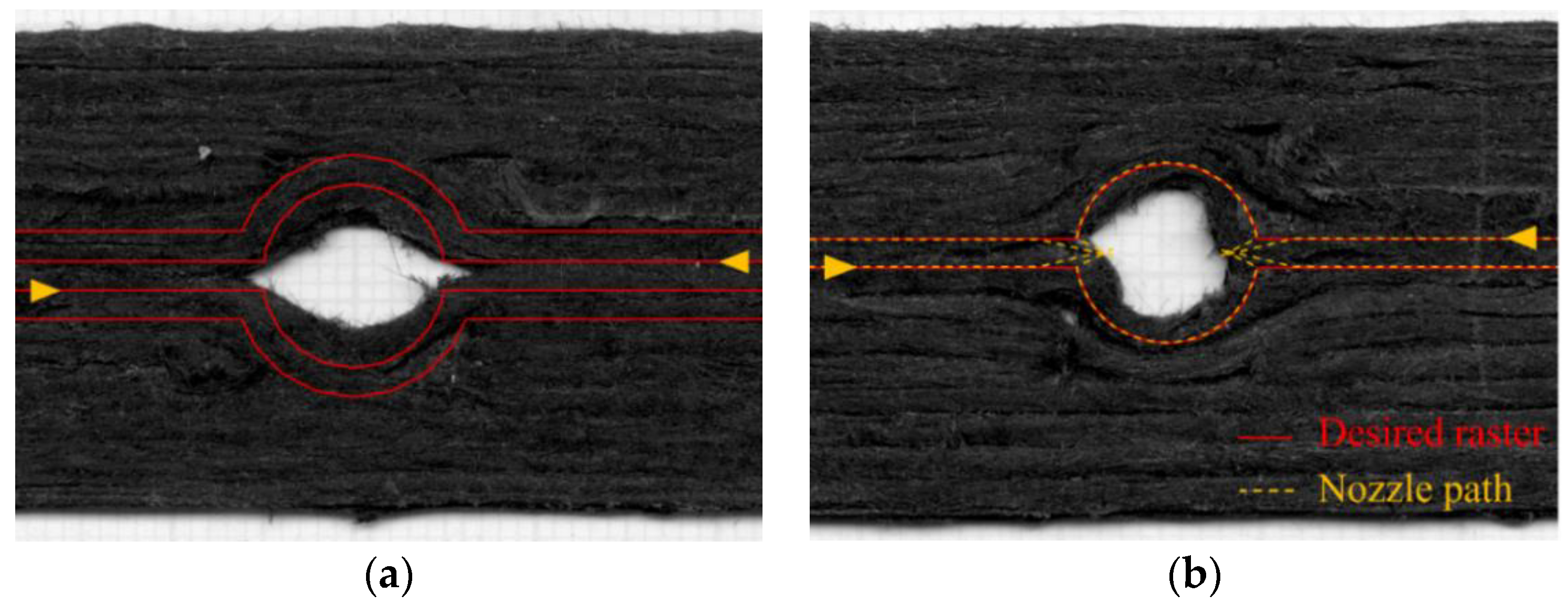
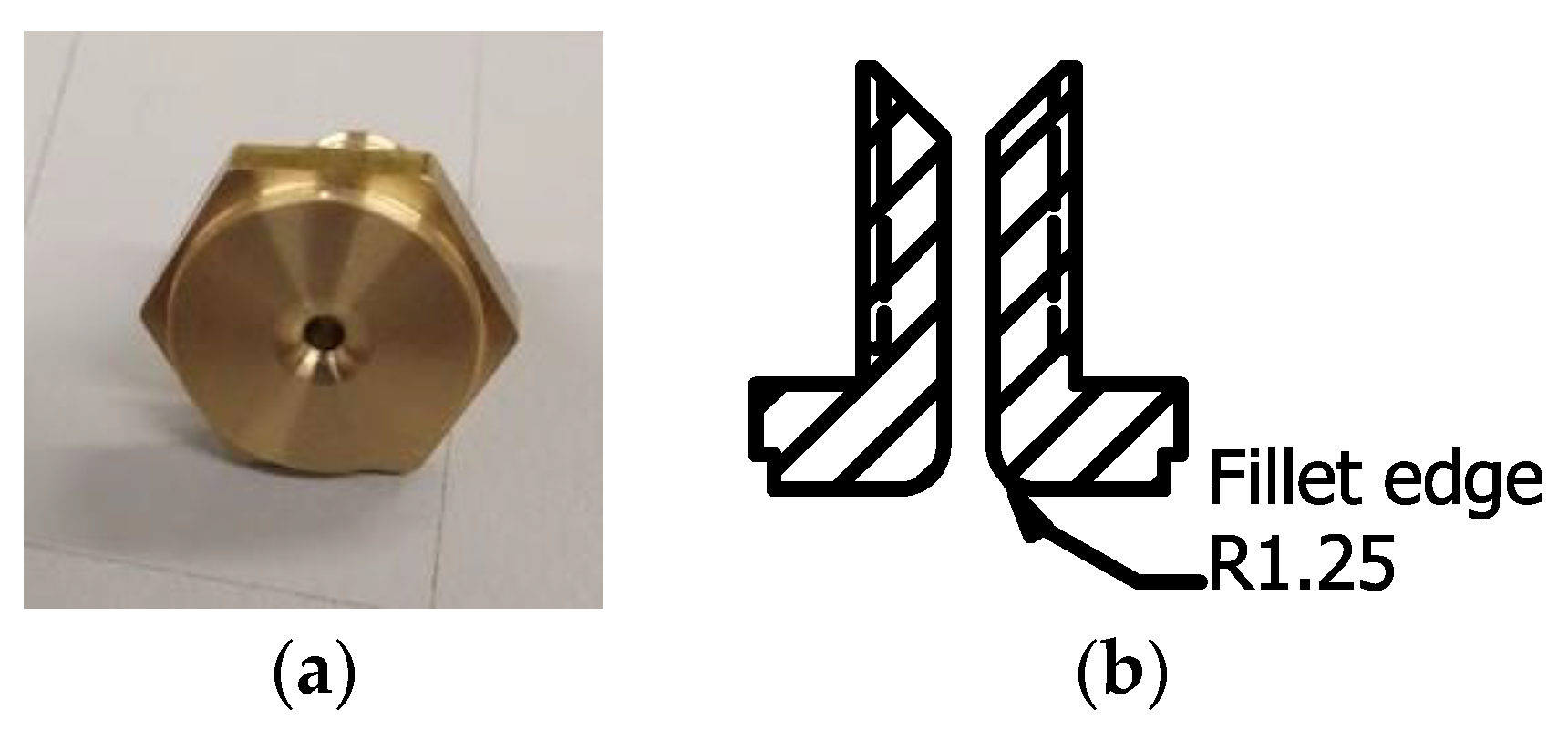
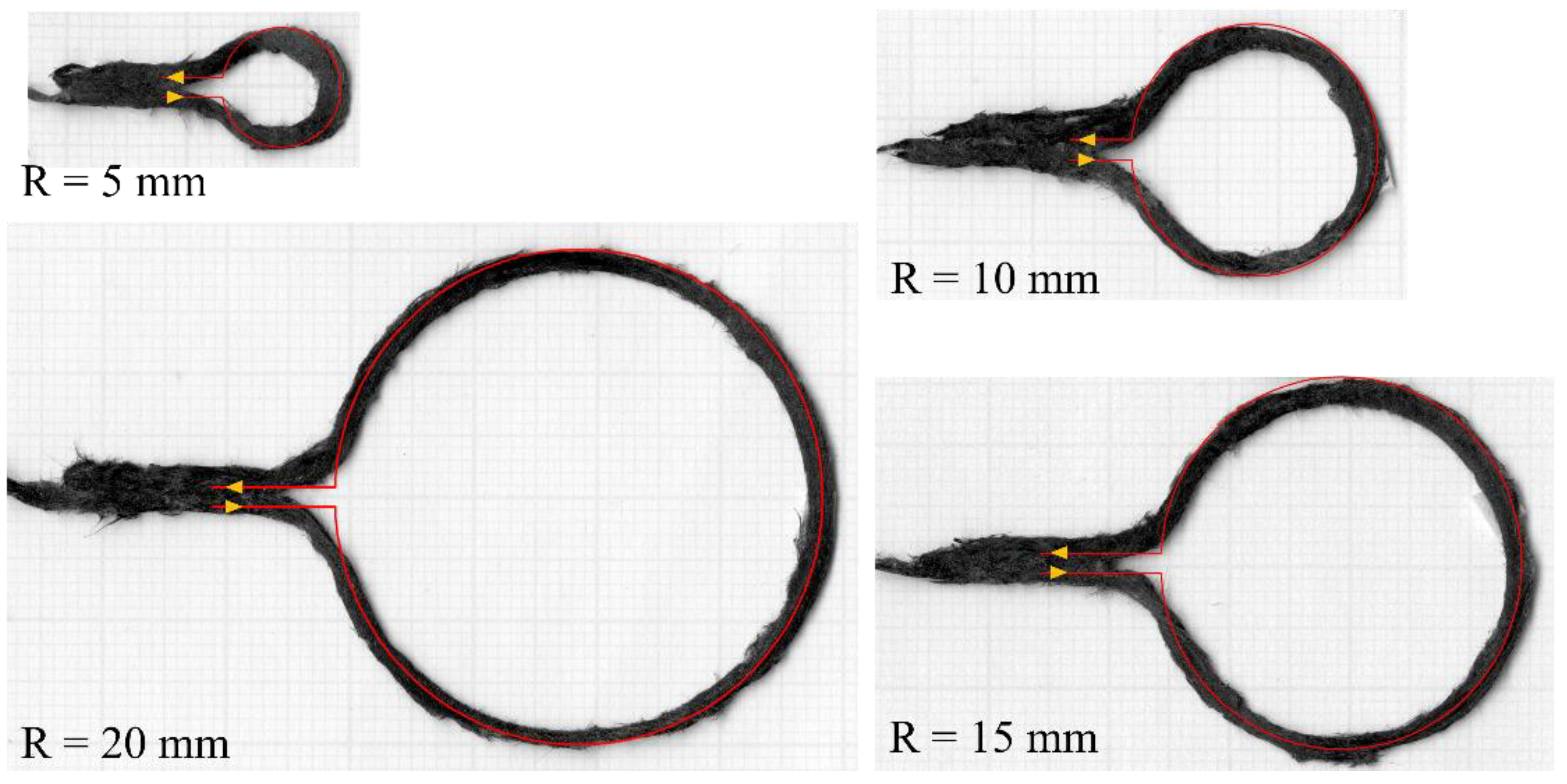

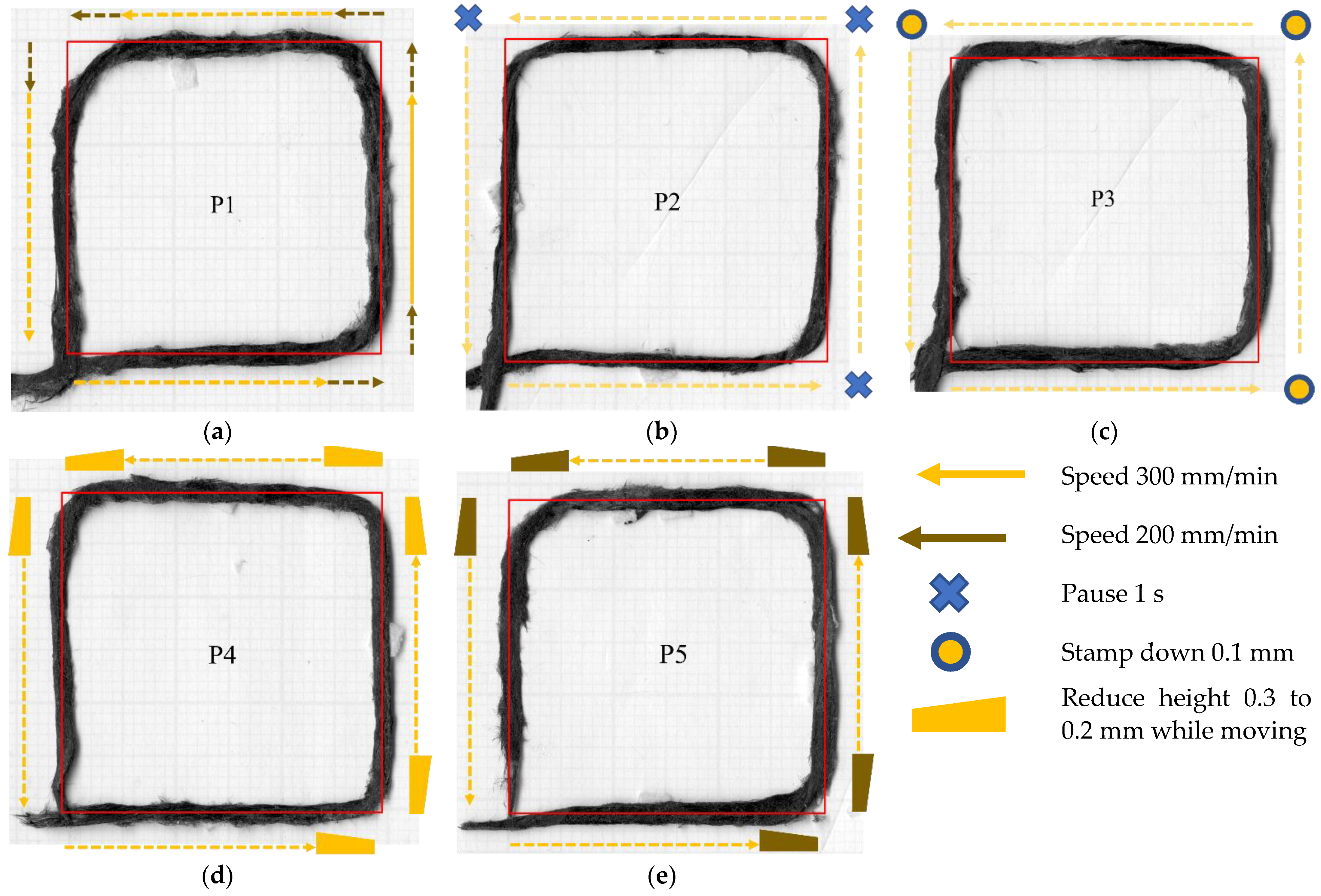
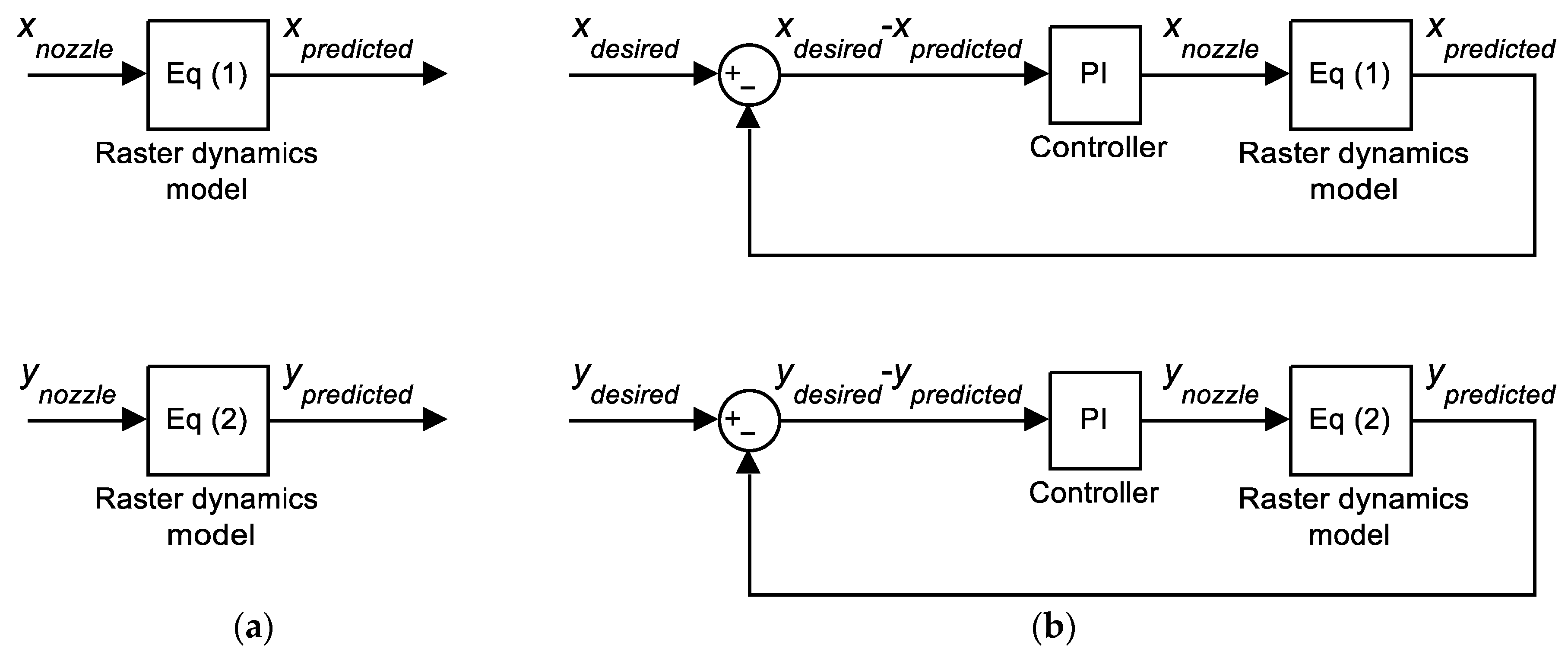
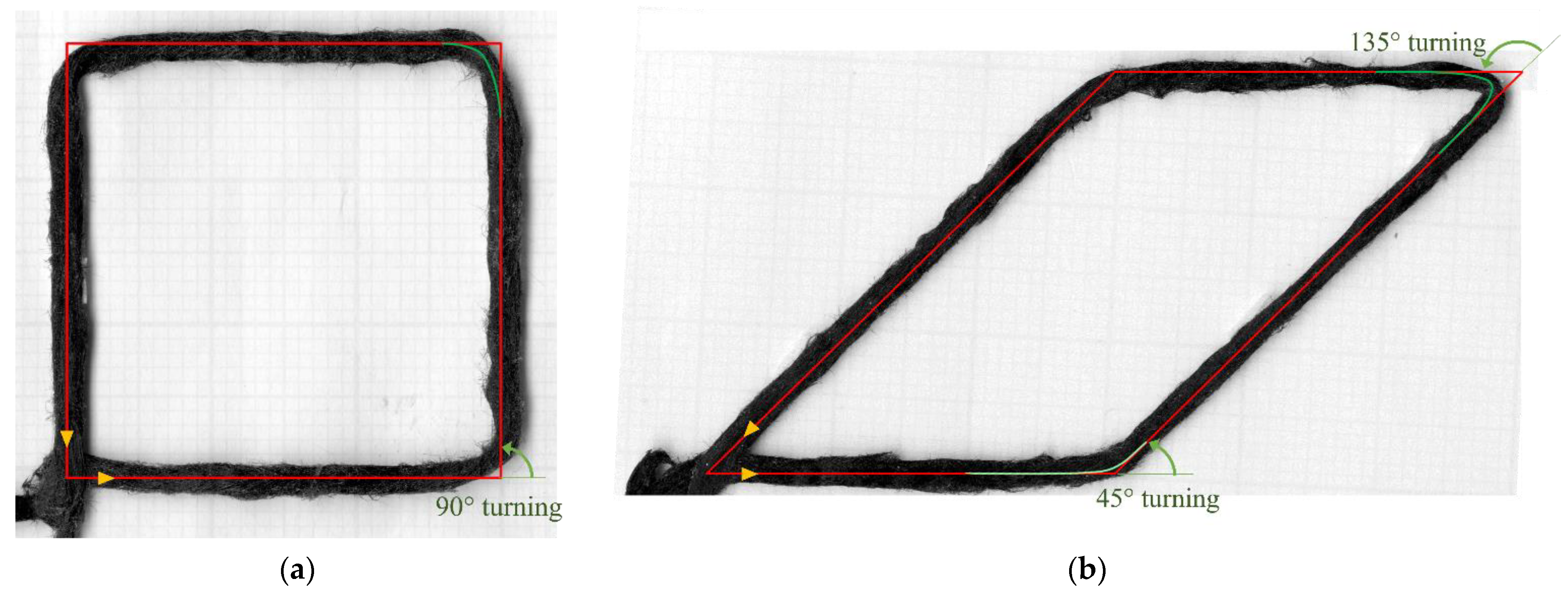
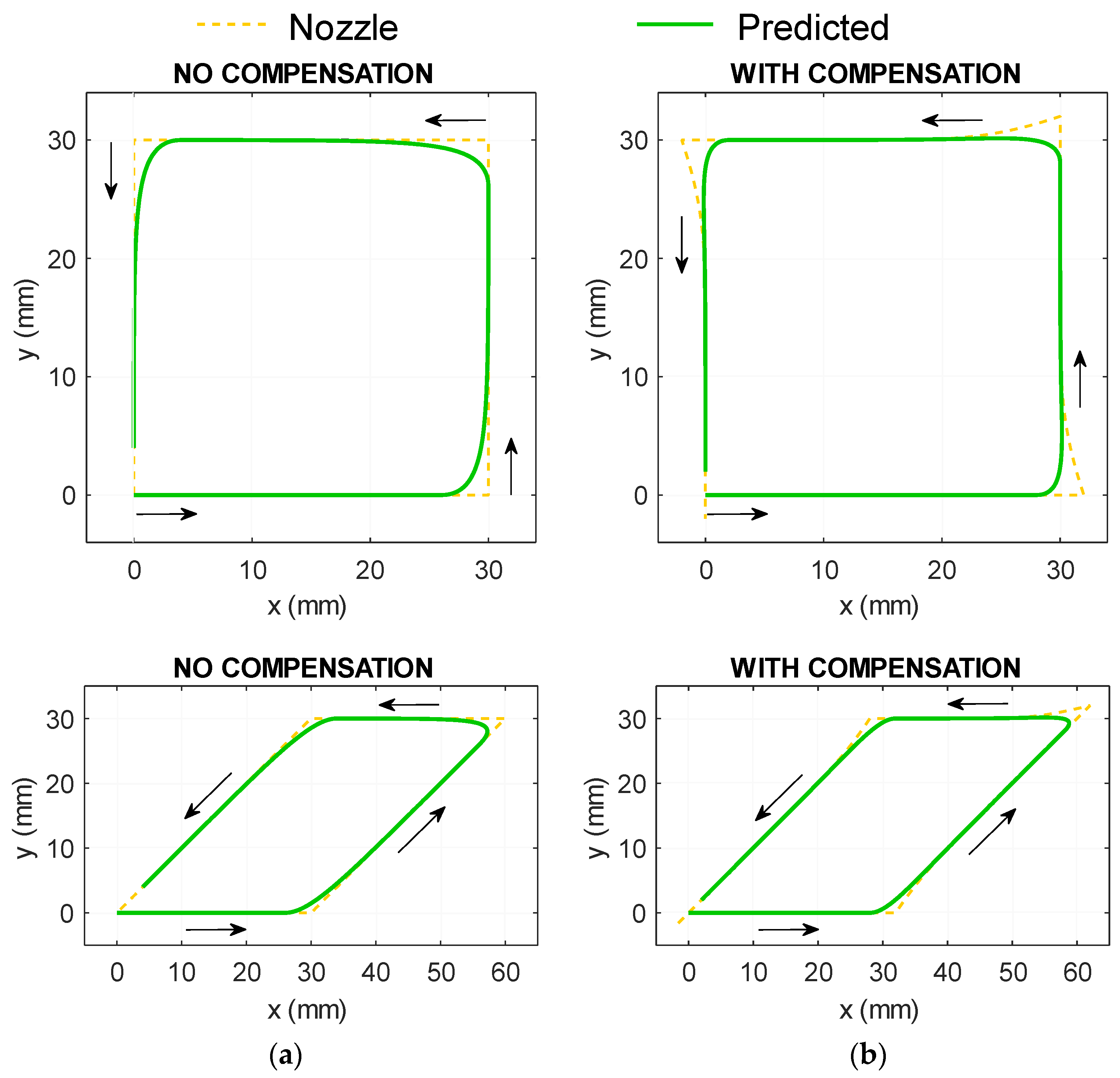
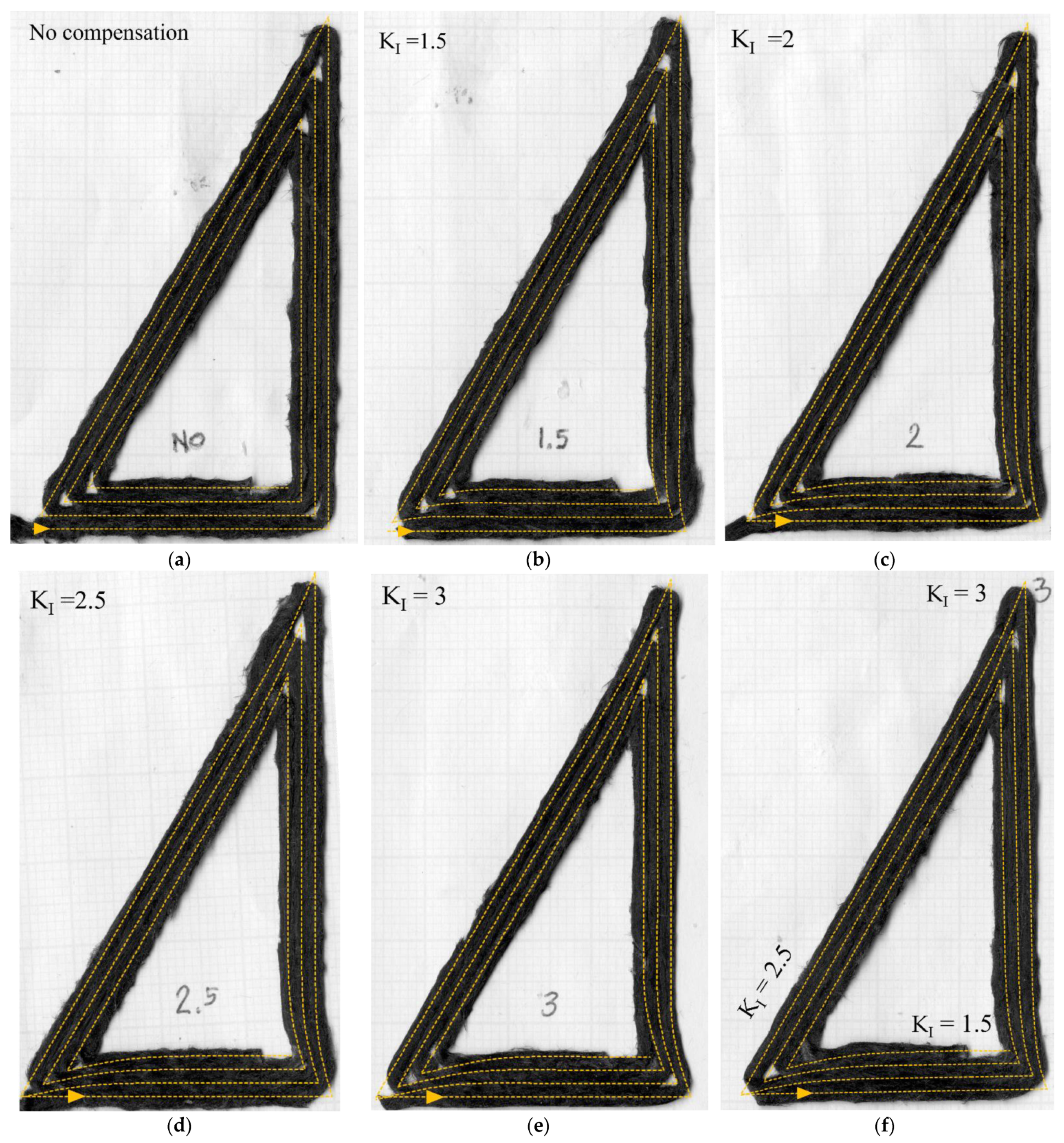
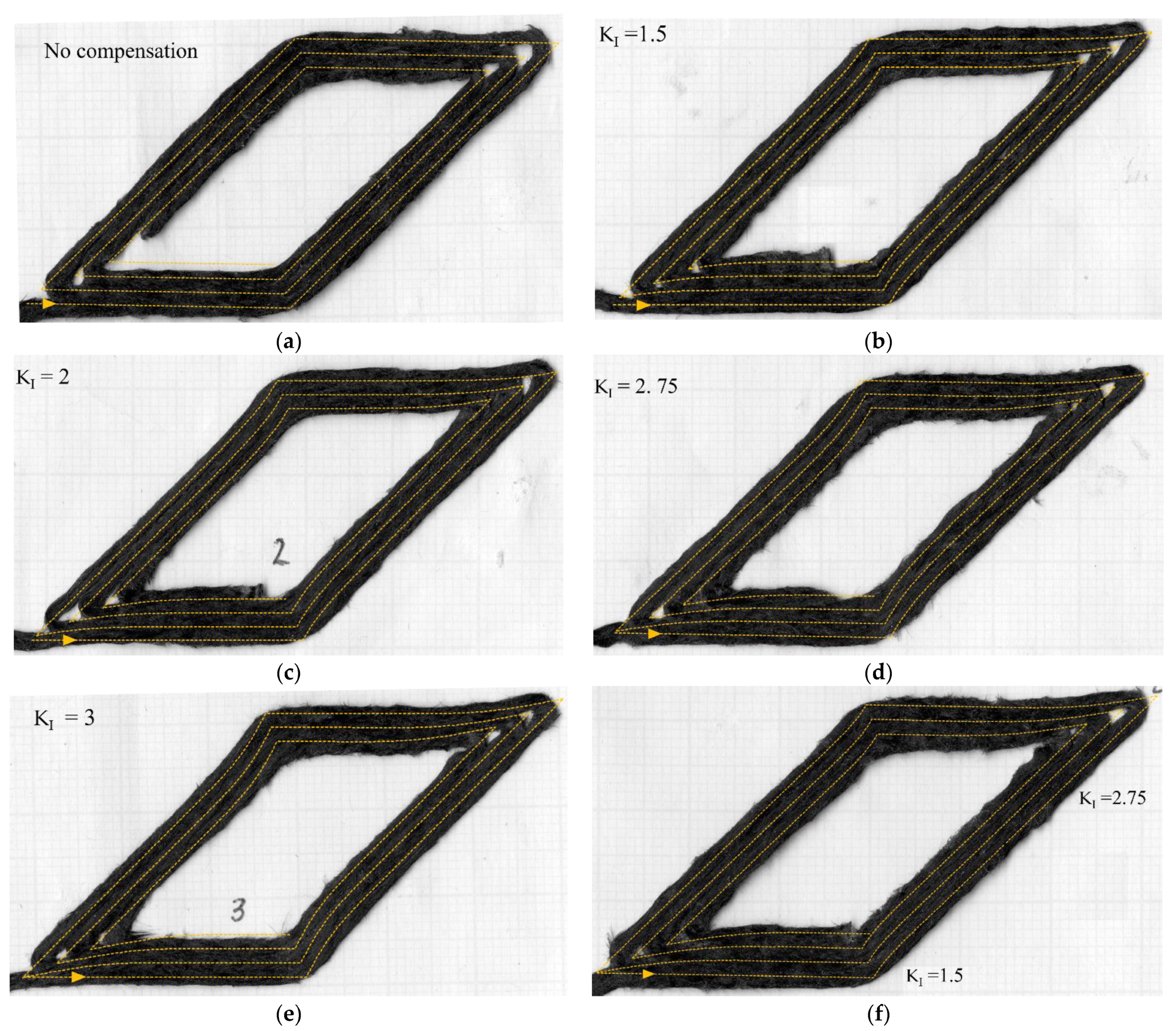
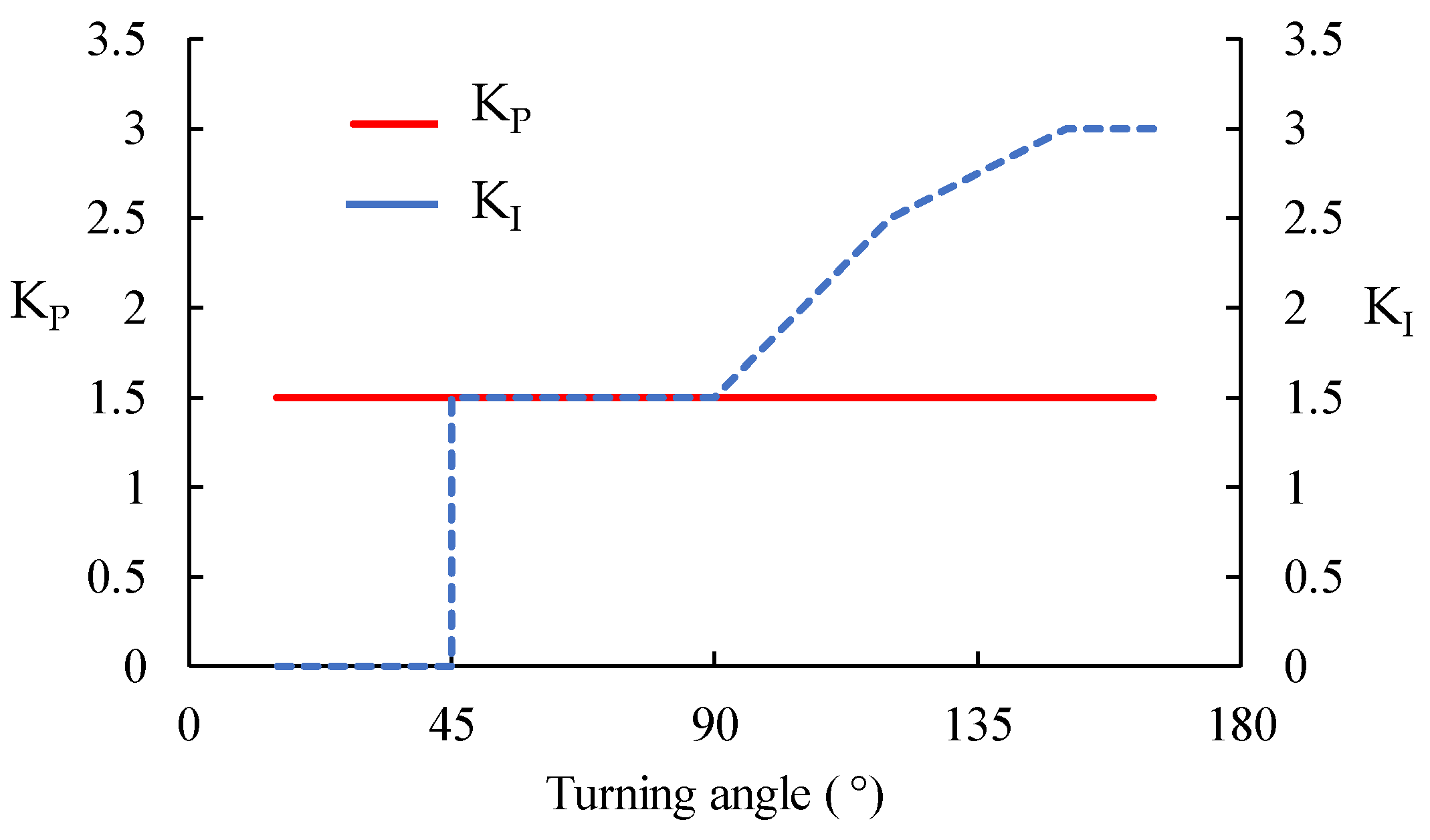
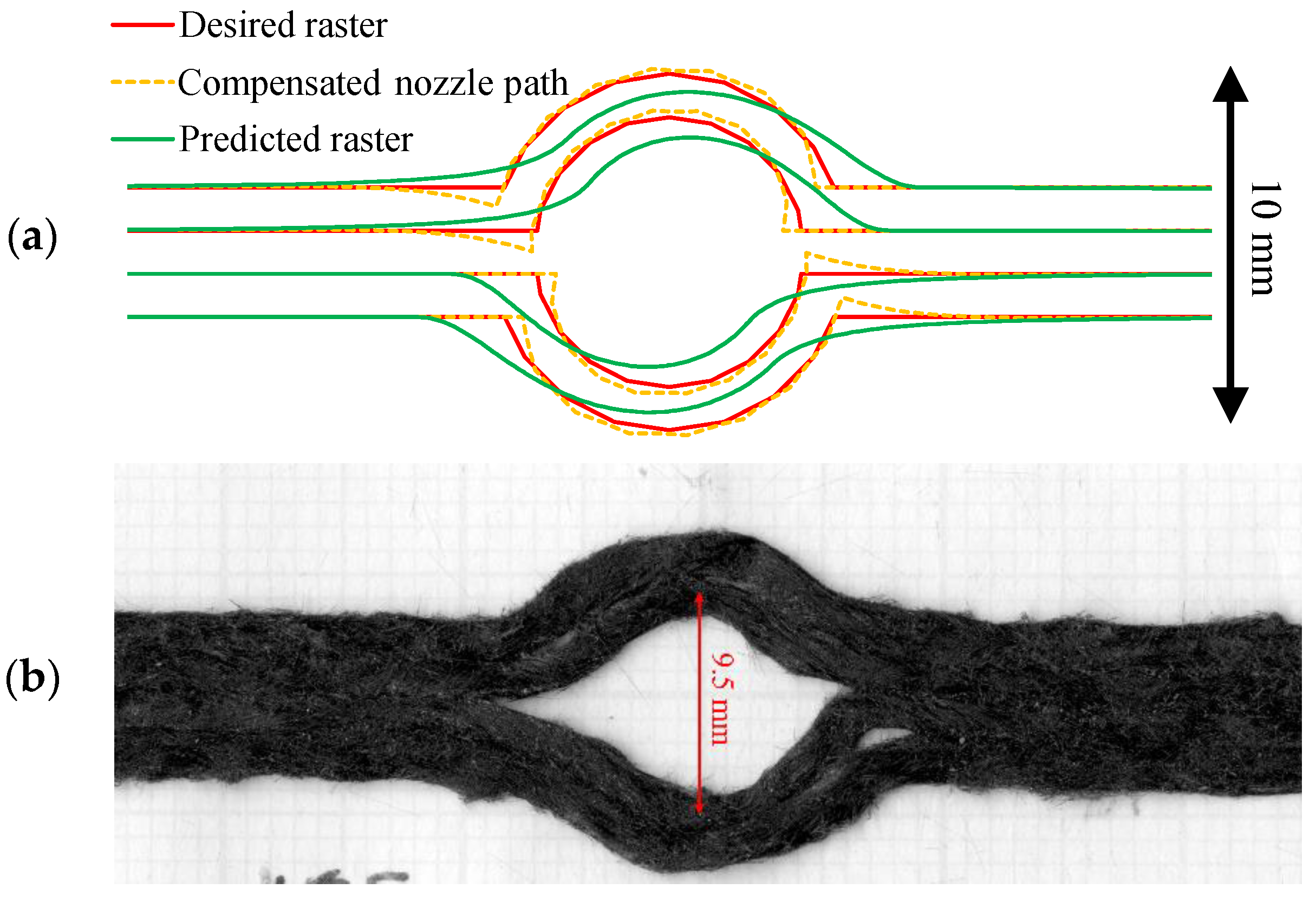
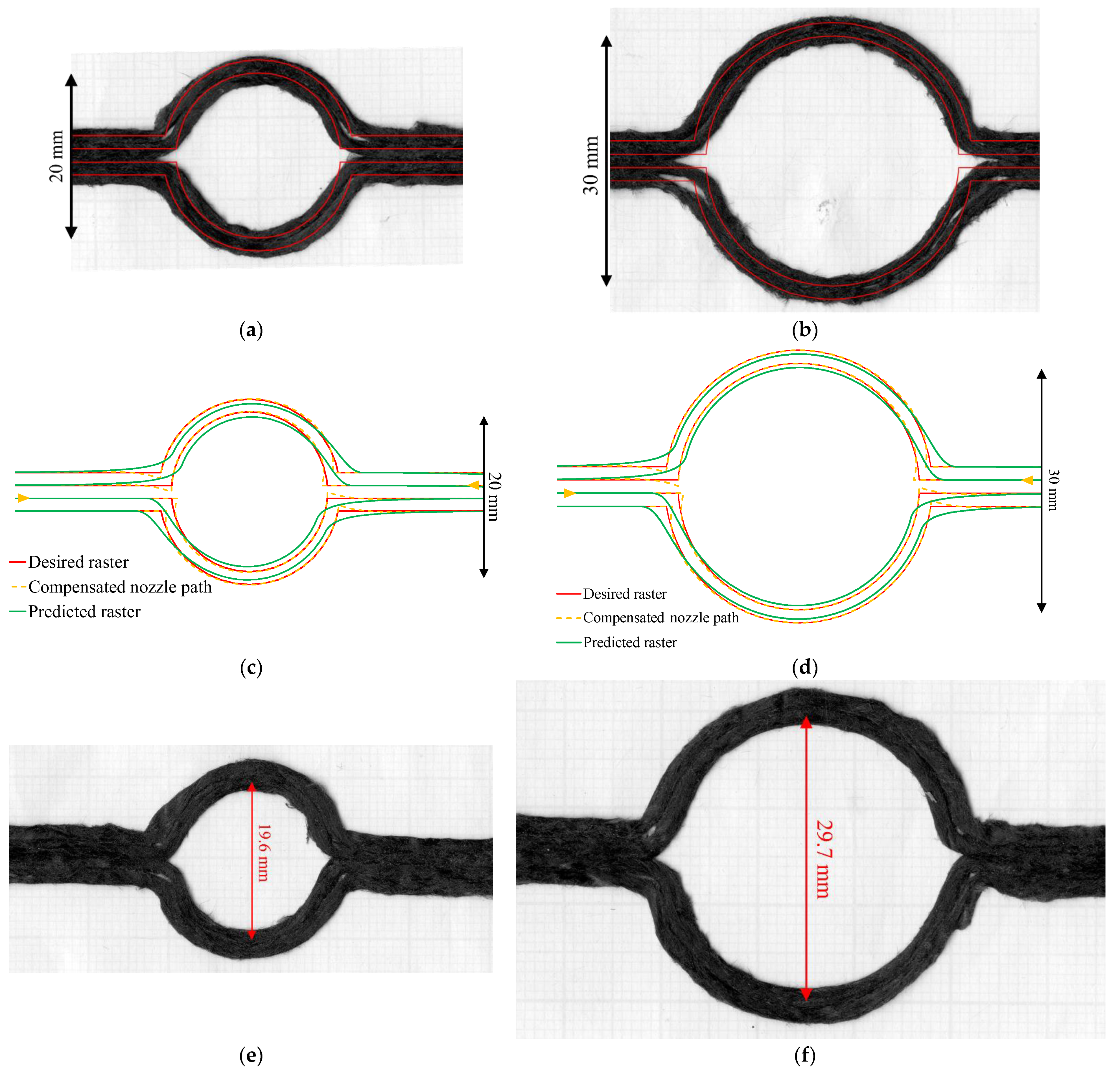
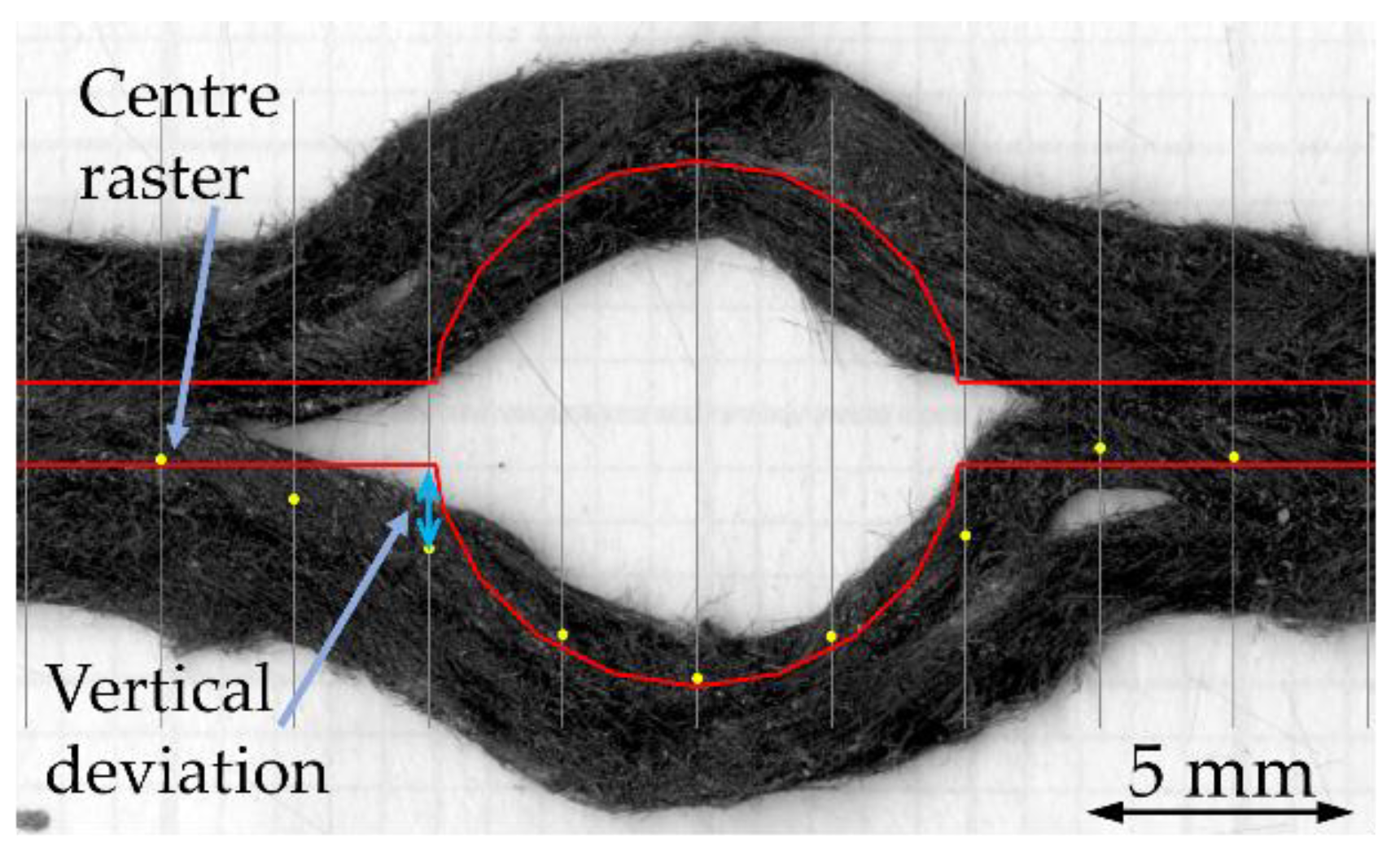
| Printing Diameter | Calculation Points | Compensation | Normalized RMS by Diameter | ||
|---|---|---|---|---|---|
| NO | YES | NO | YES | ||
| D10 | 9 | 0.76 | 0.73 | 0.076 | 0.073 |
| D20 | 13 | 0.91 | 0.45 | 0.046 | 0.022 |
| D30 | 17 | 1.28 | 0.64 | 0.043 | 0.021 |
Disclaimer/Publisher’s Note: The statements, opinions and data contained in all publications are solely those of the individual author(s) and contributor(s) and not of MDPI and/or the editor(s). MDPI and/or the editor(s) disclaim responsibility for any injury to people or property resulting from any ideas, methods, instructions or products referred to in the content. |
© 2023 by the authors. Licensee MDPI, Basel, Switzerland. This article is an open access article distributed under the terms and conditions of the Creative Commons Attribution (CC BY) license (https://creativecommons.org/licenses/by/4.0/).
Share and Cite
Krajangsawasdi, N.; Nguyen, D.H.; Hamerton, I.; Woods, B.K.S.; Ivanov, D.S.; Longana, M.L. Steering Potential for Printing Highly Aligned Discontinuous Fibre Composite Filament. Materials 2023, 16, 3279. https://doi.org/10.3390/ma16083279
Krajangsawasdi N, Nguyen DH, Hamerton I, Woods BKS, Ivanov DS, Longana ML. Steering Potential for Printing Highly Aligned Discontinuous Fibre Composite Filament. Materials. 2023; 16(8):3279. https://doi.org/10.3390/ma16083279
Chicago/Turabian StyleKrajangsawasdi, Narongkorn, Duc H. Nguyen, Ian Hamerton, Benjamin K. S. Woods, Dmitry S. Ivanov, and Marco L. Longana. 2023. "Steering Potential for Printing Highly Aligned Discontinuous Fibre Composite Filament" Materials 16, no. 8: 3279. https://doi.org/10.3390/ma16083279
APA StyleKrajangsawasdi, N., Nguyen, D. H., Hamerton, I., Woods, B. K. S., Ivanov, D. S., & Longana, M. L. (2023). Steering Potential for Printing Highly Aligned Discontinuous Fibre Composite Filament. Materials, 16(8), 3279. https://doi.org/10.3390/ma16083279









